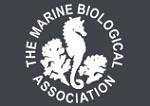APHOTOMARINE
An educational resource dedicated mainly to the photography
and diversity of marine life that can be found in coastal waters
and intertidal areas of Great Britain and Ireland by David Fenwick.

Emplectonema neesii
- worm knot 1
Ribbon worm
Emplectonema neesii
- nemertean worm 1
Ribbon worm
Emplectonema neesii
- nemertean worm 2
Ribbon worm
Emplectonema neesii
- anterior / head 1
Ribbon worm
Emplectonema neesii
- anterior / head 2
Ribbon worm
Emplectonema neesii
- anterior / head 3
Ribbon worm
Emplectonema neesii
- dorsal colour / markings 1
Species found on the lowershore at Tavis Vor, Mousehole, Cornwall. 23.09.13. SW 47255 26495.
3 Emplectonema neesii were found knotted around a small Pawsonia saxicola, Sea gherkin. The Pawsonia was on a small rock in a deep crevice. Numerous small rocks were on the floor of the crevice, which were on much finer sediments. Tavis Vor is a rocky, semi-exposed shore.
Ribbon worm
Emplectonema neesii
- worm knot 2
Specimen above was found under a rock on the lowershore, on a spit of reef in front of Smeaton's Pier, St. Ives, Cornwall, 10.10.14.
Ribbon worm
Emplectonema neesii
- anterior / head 4
Ribbon worm
Emplectonema neesii
- worm coiled 1
Ribbon worm
Emplectonema neesii
- worm coiled 2
Specimen above was found under a rock on the lowershore at Wherry Rocks, Penzance, Cornwall, 22.08.17.
Thanks to Marco Faase for originally confirming the identity.
APHOTOMARINE supports open source data recording and sharing for the benefit of wildlife, recorders, research, science and education. The project recommends the following websites and works with the following bodies and organisations.
The Marine Biological Association or MBA, based in Plymouth, is one of the world’s longest-running societies dedicated to promoting research into our oceans and the life they support. Since 1884 the MBA has been providing a unified, clear, independent voice on behalf of the marine biological community.It has a growing membership in over 40 countries.
The National Biodiversity Network or NBN is a charity that supports open source data sharing and recording supporting conservation, science and education. "Why do recorders need open source?". Simply because it supports the core values of wildlife recording and the free use of records and data over a very wide network that includes partners like the Natural History Museum.
The taxonomy used here is based on that of the following database, which is also used by the MBA, NHM and the NBN.
The World Register of Marine Species or WoRMS.

